One of the most sought-after painters in the 1430s was a man who became the court painter of Phillip the Good, Duke of Burgundy. Jan van Eyck (1380s-1441) created some of the most intriguing works of art of the 15th century and was a renowned portraitist as well.
Unlike a work referred to as “Portrait of a Man with a Blue Chaperon” (1430-1433), a painting of which the identity of the man remains unknown until today, most art historians agree that this particular work of a man wearing a red chaperon was a self-portrait.
Let’s take a closer look at some of the most interesting facts about a painting referred to as “Portrait of a Man” by Jan van Eyck, an equally intriguing painting by the artist.
1. The portrait was painted in the early 1430s
Portrait of a Man is a presumed self-portrait of the Early Netherlandish master Jan van Eyck. This group of artists is also known as the “Flemish Primitives” and were the pioneers of the Northern Renaissance of the 15th and 16th centuries.
Van Eyck moved to Bruges in the year 1429 to work at the court of Philip the Good, the Burgundian ruler of the Habsburg Netherlands at the time.
He didn’t have much trouble getting commissions because the quality of his work was second to none. This allowed him to have some sense of artistic freedom which probably resulted in van Eyck painting his self-portrait in the year 1433.
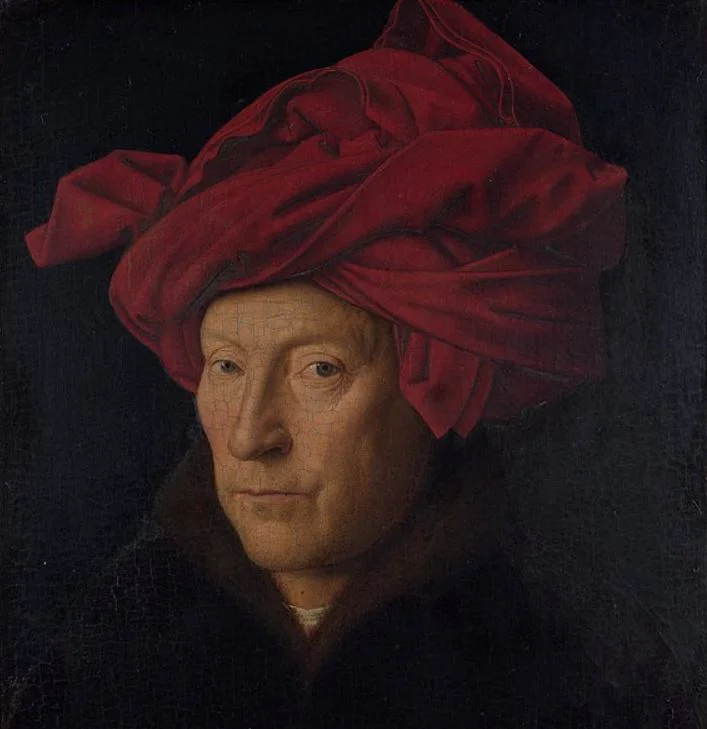
2. The painting still resides in its original frame
Considering the fact that the painting was produced nearly 6 centuries ago makes it all the more amazing that it still resides in its original frame.
The vertical sides of the frame and the central panel of the painting are, in fact, a single piece of wood as well. The artist was one of the pioneers of oil painting and is sometimes referred to as the “inventor of oil painting” in Europe, inspiring multiple famous Renaissance artists in the process.
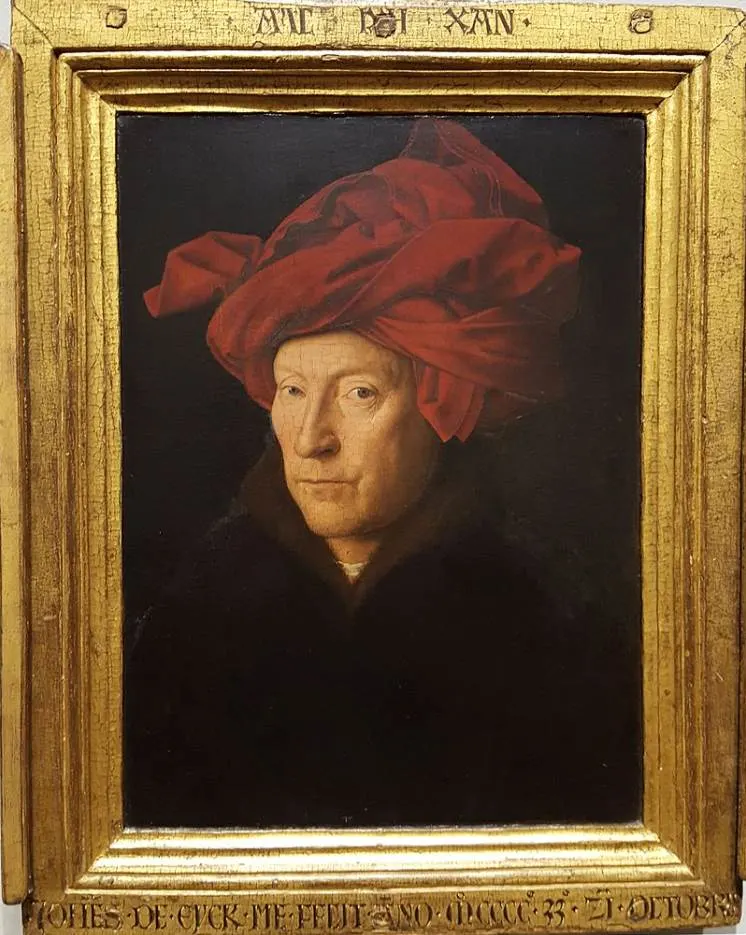
3. The work prominently features the distinctive signature of the artist
The first things you notice when you look at the original frame of the painting are the distinctive letters. These were painted onto it by the artist as if they were carved and feature both the date and the distinctive signature of Jan van Eyck.

At the top of the frame you can read “AlC IXH XAN” (“As Well As I Can”), a phrase in Dutch which he often used to sign his paintings.

At the bottom, it states: “JOHES DE EYCK ME FECIT ANO MCCCC.33. 21. OCTOBRIS” (“Jan van Eyck Made Me on October 21, 1433”).

Although the phrase on top was written in Greek letters, it’s a Dutch phrase that has been interpreted in many ways but was probably an effort to boast about his work. The bottom phrase features the exact date when the artist finished the painting.
4. Van Eyck appeared with the red headdress in some other paintings as well
The red headdress worn by the depicted man is not a turban but a chaperon. This was a type of hood that was especially fashionable in the Habsburg Netherlands before falling out of fashion at the end of the 15th century.
Although there is no direct evidence that this is a self-portrait by the artist, this particular piece of clothing worn by the artist strengthens the theory that it indeed depicts Jan van Eyck himself.
The reason is that he probably included himself and his assistant in both “The Arnolfini Portrait” (1434) (seen in a mirror) and “The Madonna of Chancellor Rolin” (1435) (seen in the background) wearing the same red chaperon.
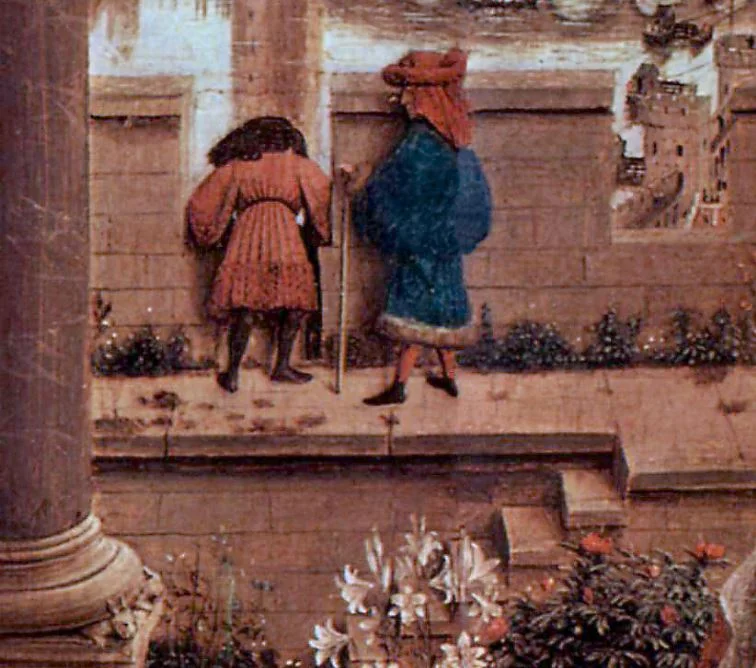
5. It has been in the collection of a famous museum in London since 1851
Portrait of a Man can be admired at the National Gallery in London as it has been in the National Gallery’s collection since the year 1851.
Little is known about the initial provenance of the work but it’s assumed it was brought to England by Thomas Howard, 21st Earl of Arundel. This Engish courtier briefly resided in Antwerp at the start of the English Civil War between 1642 and 1644.
It was acquitted by the museum in London over 200 years later which was over 400 years after the artist, the assumed subject in the painting, passed away in 1441.
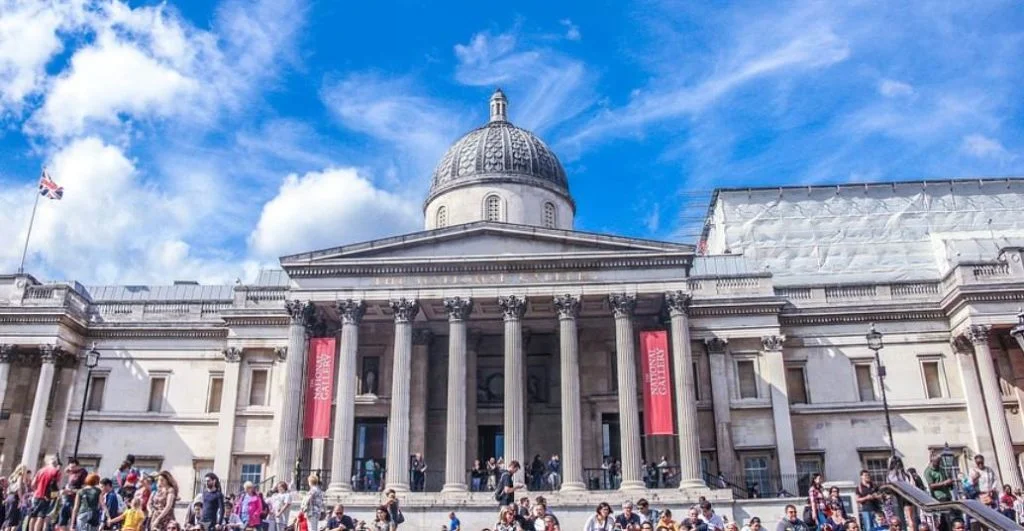
More interesting facts about Portrait of a Man by Jan van Eyck
6. Less than 2 dozen artworks are positively attributed to Jan van Eyck. Regardless, they display the extreme versatility of this genius of the Northern Renaissance.
His works range from the immense Ghent Altarpiece to delicate little portraits such as this presumed self-portrait. This particular painting is very small as it only has dimensions of 25.5 × 19 centimeters (10.03 x 7.48 inches).
7. If this was indeed a self-portrait then it’s very likely that the portrait of his wife Margaret van Eyck (1439), was intended to become a pendant of Portrait of a Man.
What’s remarkable, however, is that the “Portrait of Margaret van Eyck” is nearly double the size with dimensions of 41.2 x 34.6 centimeters (16.22 x 13.62 inches).
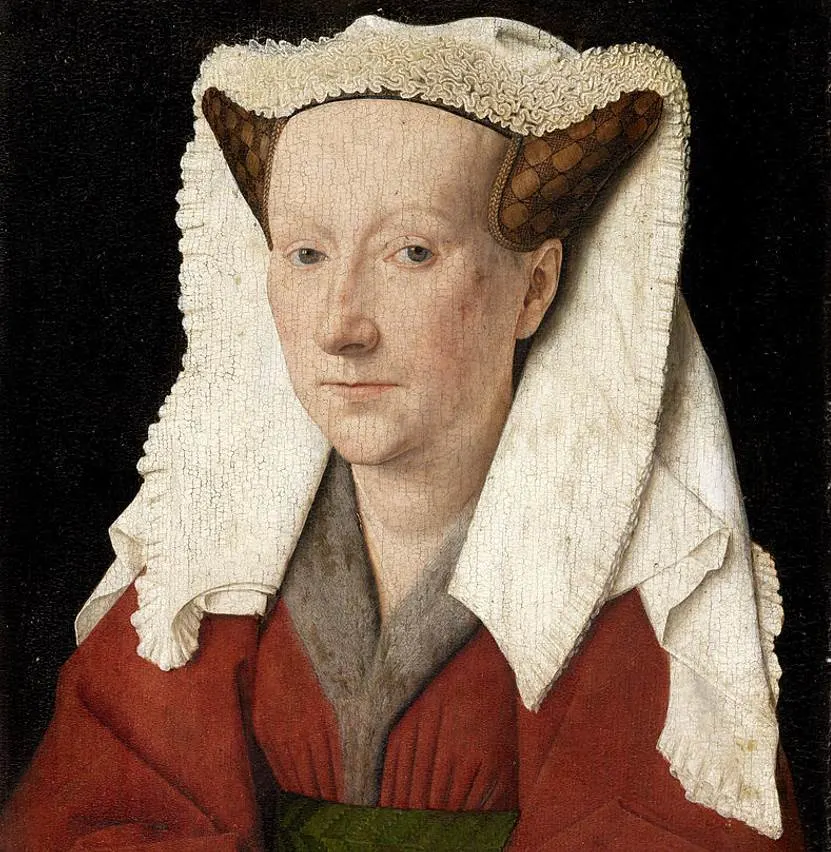
8. The fact that the artist put the exact date on the work was an extremely rare thing to do during the 15th century. The signature at the bottom clearly states “FECIT ANO MCCCC.33. 21. OCTOBRIS” which translates to “completed on October 21, 1433.”
This makes some art historians assume that van Eyck completed this work to attract more customers, mainly referring to the speed at which he complete paintings.
9. Whether or not van Eyck tried to boast his level of prolificacy to potential clients remains unknown. We do know that his works are so detailed that it’s impossible they were completed in a matter of days or even weeks.
Even this little work of art features such a level of detail regarding light and shade that it’s an astounding masterpiece. The delicate wrinkles on his face reveal that he was an aging man. His eyes are semi-red and the red was gently added to a white-blue undercoat.
10. One of the most amazing facts about Portrait of a Many by Jan van Eyck is that the intelligent and piercing gaze of the depicted man stares straight at the viewer.
This makes this a remarkable and unique work of art because this hadn’t been done up until that point since art was produced in antiquity.
This particular expression is considered to be the predecessor of arguably the most famous painting in the world, the Mona Lisa painting, which also stares directly at you regardless of your position.

